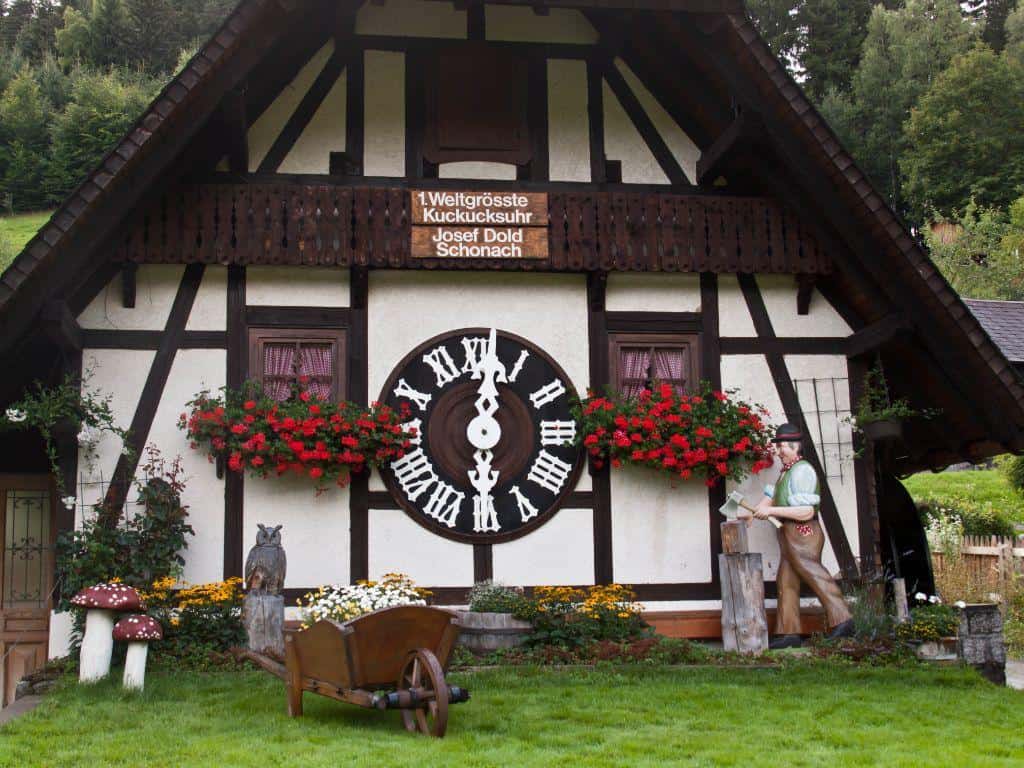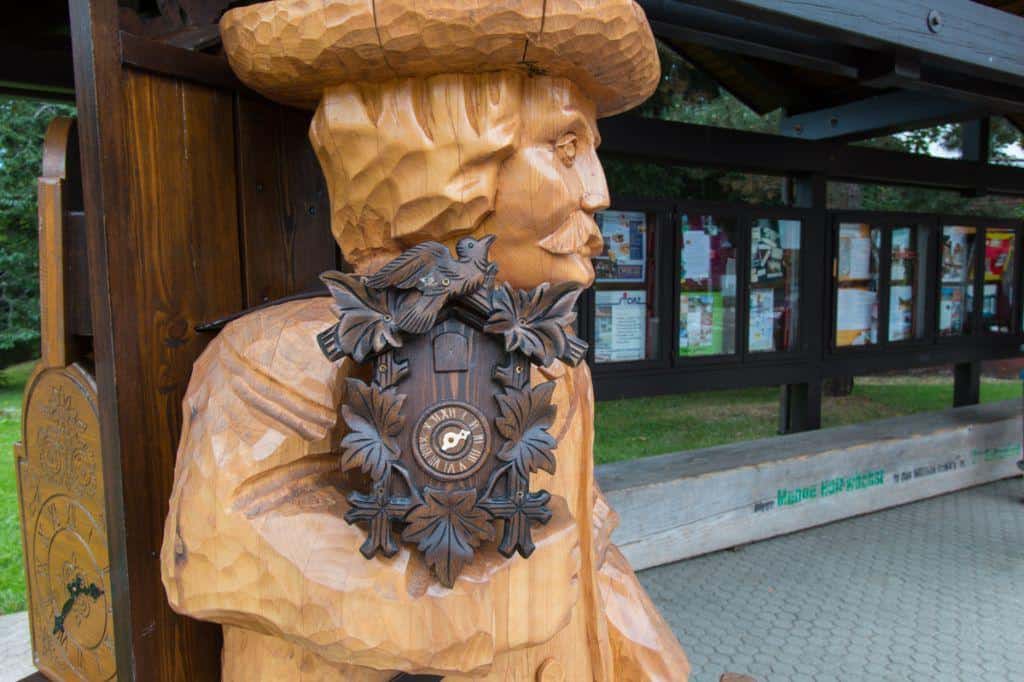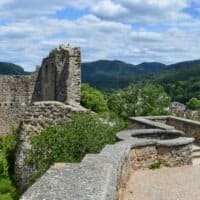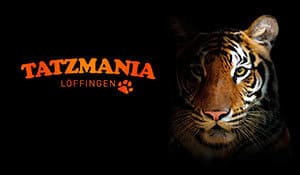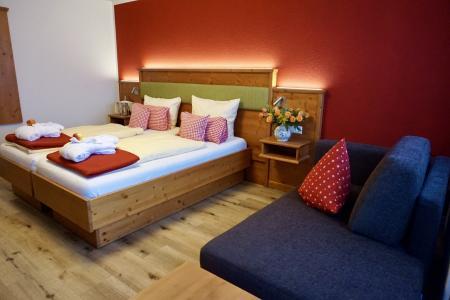The Black Forest Forests Cuckoo clock Like the Bollenhut, it is synonymous with the Black Forest. The clocks are now an indispensable part of any souvenir shop. However, it was a long, rocky road until the “Original Black Forest Cuckoo Clock” became a trademark of the region in southern Germany.
The Cuckoo clock is mentioned as early as the 17th century and was known as the mechanical cuckoo. The first appeared in the Black Forest a full century later Cuckoo clock on. It takes some time until the house with the cuckoo and the carved front becomes a widespread souvenir from the Black Forest. In hardly a Black Forest house was the clock with the cuckoo that calls on the hour to think away.
Abroad, especially in the US, is the Cuckoo clock a typical symbol for Germany. Because many Americans spend their vacation in Germany mostly in the south, in the Black Forest or in Bavaria. Since the attacks on September 11th in New York, however, the number of American guests has declined noticeably, and in return, more and more holidaymakers from the Far East are now traveling to the Black Forest.
World's largest cuckoo clock Schonach
History of the cuckoo clock
Where exactly the cuckoo clock comes from is still largely unknown.
- In 1629, on his trip to Dresden, Philipp Hainhofer from Augsburg first mentioned the cuckoo clock that belonged to Elector August of Saxony.
- In 1650, Athanasius Kircher described a mechanical organ with various automatic figures, including a mechanical cuckoo figure, in the widespread manual for music Musurgia Universalis (1650). This cuckoo automatically opens its beak and moves its wings and tail tip. At the same time, the cuckoo call sounds, generated by two organ pipes that are tuned to a minor or major third.
- In 1669, in his book Horologi Elementari, Domenico Martinelli suggested using the cuckoo call to display the hours. From this point in time at the latest, the mechanism for a cuckoo clock was known.
The first cuckoo clock from the Black Forest
In a small Black Forest house near Triberg, the two brothers Andreas and Christian Herr, born in 19 and 1812, began building cuckoo clocks that made music at the beginning of the 1814th century. The historians who write about the Black Forest clock making, however, are not entirely in agreement. Markus Fidelis Jäck writes that in 1810 Franz Anton Ketterer from Schönwald did the first in 1730 Cuckoo clock has manufactured. However, the writer Franz Steyerer reports the history of watches differently. Franz Steyerer reports in his Book “History of Black Forest Watchmaking” from (1796) that Michael Dilger from Neukirch and Matthäus Hummer began building cuckoo clocks in 1742. In the 19th century, the cuckoo was found in lacquer clocks as well as in frame clocks.
The Furtwangen watchmaking school
To the poor region around Furtwangen to strengthen, the government of the "Grand Duchy of Baden" commissioned the young civil engineer Robert Gerwig (1820-1885) to set up the watchmaking school in Furtwangen to found. The cuckoo clock was initially mostly made directly by farmers and builders at home in the Black Forest. With such a clock school, the aim was to promote and industrialize the production of cuckoo clocks. The school in Furtwangen is now called the “Robert Gerwig School”.
Robert Gerwig grew up in Karlsruhe on. After completing his engineering exams, he worked at the Technical University of Karlsruhe as senior director of water and road construction. Gerwick was involved in railway construction his entire working life. He worked on many railway lines in the Black Forest, his last project being the Höllentalbahn.
Only a short time after the founding, the then headmaster Robert Gerwig called the artificial in the Grand Duchy of Baden to a competition. Designs should be submitted for a new watch case.
The appearance of today's cuckoo clock
Friedrich Eisenlohn, architect and also a planner of railway lines, submitted a case for the design of the cuckoo clock in the style of his planned railroad keeper's house and won the first prize. A decorated front with carvings of vine and oak leaves as well as local animals is then already used in 1861 for the clocks by the manufacturer Theodor Ketterer Furtwangen found. From 1863 onwards, Johann Baptist Beha produced the still known shape of the clock with carved leg hands and the weight in the shape of a pine cone.
The lacquer plate clock, which was common until the middle of the 19th century, was displaced from the market within a few years by the new railway house clock. The triumphant advance of the cuckoo clock began.
At that time sales of the cuckoo clock
The watch wearer was created based on the model of the glass wearer who wandered through the country on backpack carriers. The watch bearers also had a carrying frame on their back, on which the cuckoo clock was transported. The cuckoo clock was not only sold in this way in the Black Forest. The traders formed companies. They had branches and roamed almost all of Europe with their cuckoo clocks. The first watch dealers appear from the year 1740. Today you can still see the watch bearers with their cuckoo clocks as traditional festivals or as dolls in museums.
A 100% original Black Forest clock can be found in the Online shop Schwarzwaldpalast.de. In cooperation with the most renowned manufacturers, we offer you top quality, good advice, delivery and customer service for everything to do with cuckoo clocks from the Black Forest. From the antique style to the modern Black Forest clock - discover the diversity and beauty of each one.
Order cuckoo clocks from a price from 40 Eur including delivery and shipping at Amazon: http://amzn.to/2s8fN2t
More information about the cuckoo clock:

